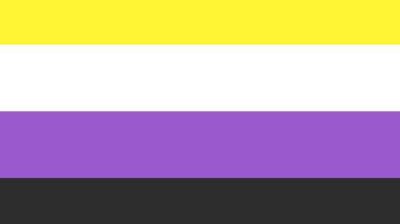A-Z of gender identity
A crash course on gender identity

Gender identity is the personal sense of one’s own gender. For example, a person’s gender identity might mean that they identify as a woman, man, agender, nonbinary, or something else. With all of these terms, it is very important not to label anyone without their permission or make assumptions. It is best to use the term/s someone uses for themselves.
While many people are brought up to believe that the only two things that anyone can be are a man or a woman, the reality for a lot of people is much broader. There can be as many unique gender identities as there are people in the world because we each experience our gender a bit differently.
If you feel a bit confused by all this, don’t worry. If you’ve grown up thinking about gender in a certain way, it’s natural to feel confused to learn that it may be more complex than you’d previously thought. Remember, it’s ok to question your gender or be unsure about what your gender is. Many people identify as different genders at different stages in their lives and this is completely fine. Here’s our crash course in gender identity.
What is the difference between sex and gender?
One of the most important things in understanding the complexities of gender identity is knowing the difference between sex and gender.
Sex
Sex is the word for a person’s biological sexual characteristics, such as hormones, chromosomes and genitals. Traditionally, a person’s sex is assigned to them at birth by examining the baby’s genitals. If a baby has a penis, the baby is assigned male at birth, and if they have a vulva, the baby is assigned female. The baby is then usually brought up by their family and/or society as a boy or girl, and as they get older, a woman or man. This can decide a lot about how a person will be raised and treated in the world.
Sex is not always a very accurate category. There are many people who are intersex, and their sex characteristics do not align with the traditional ‘female’ or ‘male’ categories.
The sex someone is assigned does not necessarily have anything to do with their gender. While some people never question the gender they were raised as, many do.
Gender
Your gender is how you identify yourself. Gender is something that is composed of many different factors which help form us into the people we are. These factors can include our bodies, our identity and our expression of self. People who identify with the gender they were assigned at birth are often referred to as cisgender, and those who do not identify with the gender they were assigned at birth can be transgender, non-binary or agender (without a gender).
For some people, their gender can be something that is fluid and can evolve over time, and for others, it is a constant. Gender is personal, and it is often defined by the social and cultural standards of a certain community. Gender roles and identities vary in different parts of the world.
A-Z of gender identity
- Agender
- Androgynous
- Bigender
- Binary gender
- Binary sex
- Cisgender
- Cis man
- Cis woman
- Cissexism
- Cross-dressing
- Deadnaming
- Drag king
- Drag queen
- FTM
- Gender dysphoria
- Gender euphoria
- Gender expression
- Gender fluid
- Gender identity
- Gender affirming healthcare
- Gender roles and expectations
- Genderqueer
- Intersex
- LGBTQIA+
- Misgender/mispronoun
- MTF
- Nonbinary
- Transgender
- Trans
- Transitioning
- Transphobia
- Transsexual
- Trans feminine
- Trans masculine
Agender
A person who does not identify with any gender. This is different to being aromantic or asexual.
Androgynous
This is a term that can be used to describe someone who expresses their gender with a mixture of masculine and feminine traits, or with traits that are neither strictly masculine nor feminine. They could be transgender, non-binary, cisgender, or agender. As with most of the terms on this list, it’s best to only refer to someone with how they self-identify.
Bigender
This is someone who identifies as two genders. These genders may be man and woman, but may also be, for example, woman and agender, or man and nonbinary.
Binary gender
Binary gender refers to the grouping of gender into only two categories: “man” and “woman.” This is an outdated belief that doesn’t account for the vast range of ways that people experience gender.
Binary sex
This is the belief that there are only two sex categories: “male” and “female.” While hospitals and governments continue to categorise people into these two categories, there are many people that fall outside of the male and female binary including intersex people and non-binary people.
Cisgender
Cisgender is a term for people who identify with the gender they were assigned at birth. If the gender you were assigned fits who you are, you are cisgender.
Cis man
A person who identifies as a man, and was assigned male at birth.
Cis woman
A person who identifies as a woman, and was assigned female at birth.
Cissexism
This is the assumption that everybody is naturally cisgender, and that it is somehow unusual, out of the norm, or deviant to identify as anything else.
Cross-dressing
Cross-dressing is the practice of wearing clothes that aren’t traditionally associated with your gender. For example, someone who identifies as a man, wearing clothes that are traditionally considered to be worn by women. Cross-dressing is a form of gender expression and is not done for entertainment. If you have heard the term Transvestite to describe this, avoid using it as it is no longer used and can be offensive.
Deadnaming
Deadnaming means calling someone by their birth name after they have changed their name. This term is often associated with trans people who have changed their name as part of their transition. This is a very hurtful and disrespectful thing to do on purpose. If you say someone’s birth name by mistake, apologise, correct yourself, and aim to be more mindful moving forward.
Drag king
Someone who performs hyper-exaggerated masculine traits for the sake of art or entertainment, usually at a show or theatre. Usually, the performer identifies as a woman, but does not necessarily.
Drag queen
Someone who performs hyper-exaggerated feminine traits for the sake of art or entertainment, usually at a show or theatre. Usually, the performer identifies as a man, but does not necessarily have to.
FTM
This stands for Female to Male. This term can be used by a transgender person who was assigned female at birth, but is a man.
Gender dysphoria
This term is used to describe the deep discontent and anxiety someone can feel when they are living their lives with an assigned sex and/or gender they don’t identify with. Not all transgender people experience dysphoria, and it is possible to be transgender without feeling dysphoria.
Gender euphoria
Gender euphoria is the experience of feeling great about you, your body, and your gender. It was coined to express a positive and exciting feeling of one’s gendered self, which is a concept that is sometimes not talked about as much as negative experiences.
Gender expression
How someone shows their gender through clothing, hair, behaviour, etc.
Gender fluid
Someone who does not have a constant or fixed gender identity and/or gender expression
Gender identity
Someone’s internal perception of their gender – how they feel inside about their gender.
Gender affirming healthcare
Gender affirming healthcare is healthcare that holistically attends to trans and non-binary people’s physical, mental, and social health needs and well-being while respectfully affirming their gender identity. It can include gender-affirming surgery.
Sometimes a gender affirming surgery is medically referred to as Gender Confirmation Surgery (GCS) or Sex Reassignment Surgery (SRS), but these are not always the preferred terms.
Gender roles and expectations
People are assigned a sex at birth and this often predetermines a gender role that a person is expected to fulfil. For example if someone assigned female at birth, they will be expected to live, identify, and outwardly present as a woman. Gender roles also create expectations such as being expected to ‘act’ like a woman and carry out jobs that society deems appropriate for women. Gender roles and expectations are often reinforced by society, people around us, and the media. People of all genders can find these expectations limiting and oppressive.
Genderqueer
A term used by people whose gender identity is queer, or whose gender falls outside of the gender binary. It might be used by a person who does not subscribe to conventional gender norms, or who identifies as multiple genders, or no genders.
Intersex
This is an umbrella term used to describe a wide range of natural bodily variations that do not fit typical binary notions of male and female bodies. In some cases, intersex traits are visible at birth, while in others they are not apparent until puberty or later in life. Some intersex variations may not be physically apparent at all.
LGBTI+
LGBTI+ is a commonly used acronym for Lesbian, Gay, Bisexual, Transgender, or Intersex. The + sign is to signify other categories of gender and sexual orientation that aren’t accurately represented by these terms. Other variations of this acronym are LGBT, LGBTQ+ and LGBTQIA+.
Misgender/ Mispronoun
To refer to someone using a word that does not reflect their gender. This could be a pronoun such as he/her or a form of address such as ladies/guys. This may be unintentional and without ill intent or can be an intentional expression of discrimination. Regardless of intent, misgendering/mispronouning has a harmful impact. If you misgender or mispronoun someone by mistake, apologise, correct yourself, and aim to be more mindful moving forward.
MTF
This stands for Male to Female. This term can be used by a transgender person who was assigned male at birth, but is a woman.
Nonbinary
People whose gender identity is neither exclusively woman or man or is in between or beyond the gender binary.
Pronouns
The words used to refer to a person other than their name. Common pronouns are they/them, he/him, and she/her. Neopronouns are pronouns created to be specifically gender-neutral including xe/xem, ze/zir and fae/faer. For those who use pronouns (and not all people do) they are not preferred, they are essential.
Transgender
Transgender is an umbrella term for people who do not identify with the gender they were assigned at birth.
Trans
Sometimes used as a shorthand version of transgender or used to be inclusive of a variety of identities under the transgender umbrella.
Transitioning
The process of transitioning from the gender you were assigned to another gender identity. Transitioning can, but does not have to, include external changes in appearance, clothing styles, voice changes, mannerisms, changing your name, taking hormones, or surgery. Transitioning does not have to involve all or any of this. Not all transgender people will have access to these sorts of changes, feel safe to, or desire to transition in these ways at all.
Transphobia
The fear or dislike of someone based on the fact they are trans, including denying their gender identity or refusing to accept it. Transphobia can take the form of individual and institutional discrimination, prejudice, and violence against trans, non-binary, or gender variant people. Transphobia may be targeted at people who are, or who are perceived to be, trans.
Transsexual
This is a term that is used to describe someone who has medically or surgically transitioned from one sex to another. Some people find this term offensive, due its medical history. Furthermore, after medically transitioning, many people cease to identify as transexual or transgender, and simply identify as a woman or a man. It’s best to avoid this term, unless you meet someone who uses it to describe themselves.
Trans feminine
A trans person whose gender identity and/or expression is closer to femininity than masculinity.
Trans masculine
A trans person whose gender identity and/or expression is closer to masculinity than to femininity.
Need more information?
We are here to answer your questions and talk through your options. Our online chat service is for 16 to 25 year olds and is available Monday to Friday, 4pm to 8pm. Chat to us now about your situation.
- Chat now to a trained Youth Information Officer
- Or leave us a message and we will email you back





